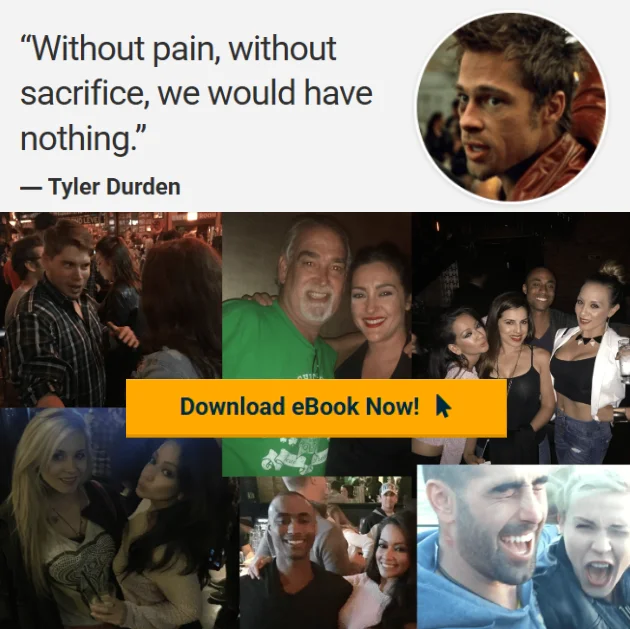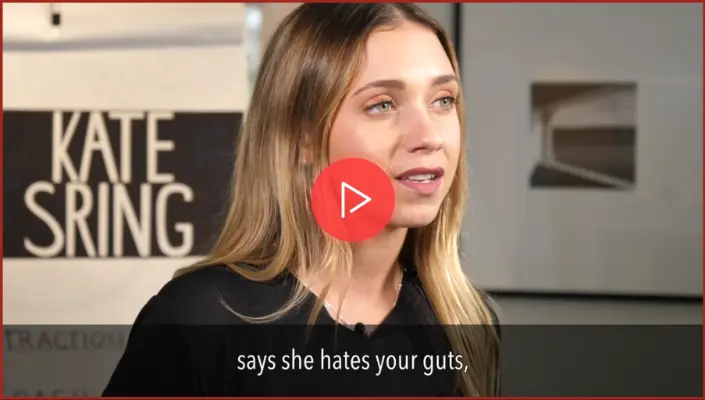Table of Contents
Friends with Benefits: The Ultimate Guide to Navigating Casual Relationships in 2025
Friends with benefits relationships have become a common dating experience for many adults looking to enjoy physical intimacy without the complexities of romantic commitment. As someone who's navigated these waters myself, I've learned that successful FWB arrangements require more finesse than most people realize. This guide will help you understand the dynamics, set healthy boundaries, and make the most of these casual relationships.
1. What Exactly Is a Friends with Benefits Relationship?
A friends with benefits relationship combines friendship with physical intimacy while intentionally avoiding romantic commitment. These arrangements have grown increasingly popular, especially among younger adults seeking connections without traditional dating pressures.
According to research, about 60% of college students have experienced a friends with benefits relationship at least once. That's a surprisingly high number, but it makes sense in today's dating landscape where many find traditional relationships too demanding.
What sets friends with benefits apart from random hookups is the foundation of actual friendship. Unlike a one-night stand, you maintain regular non-sexual contact and genuine care for each other—just without the expectation of romance or exclusivity.
The FWB Spectrum
Not all friends with benefits relationships look the same:
- The Weekend Warriors: Only connect occasionally for fun
- The Regular Thing: Have established patterns but minimal emotional involvement
- The Almost-Dating: Maintain friendship boundaries but spend significant time together

2. Why Choose a Friends with Benefits Arrangement?
My experience with casual relationships taught me they can fulfill specific needs during certain life phases. Here are some legitimate reasons people choose friends with benefits setups:
Freedom from Commitment When you're busy building a career or recovering from a breakup, a casual relationship offers connection without demanding emotional energy. Think of it like Jake Peralta from "Brooklyn Nine-Nine" before he realized his feelings for Amy—enjoying companionship without being ready to settle down.
Emotional Safety Research shows many people, particularly men, appreciate FWB arrangements for avoiding vulnerability while still enjoying intimacy. The existing friendship provides trust and comfort that random hookups lack.
Exploration Without Pressure For those discovering their preferences, friends with benefits relationships can offer a safe space to explore without relationship expectations. It's like having a gym buddy for your love life.
Avoiding Dating App Fatigue Let's be honest—swiping through profiles gets exhausting. A friends with benefits arrangement eliminates the need for constant first dates and awkward small talk.
3. Setting Yourself Up for Success
The most successful friends with benefits relationships I've witnessed share common elements:
Choose Wisely
Not all friends make good FWB partners. Pick someone:
- You're genuinely attracted to
- Who communicates well
- Who doesn't match your long-term relationship criteria
- Who isn't likely to develop deeper feelings
This last point is crucial. If your friend has previously expressed romantic interest, reconsider whether a casual relationship is fair to either of you.
Establish Clear Boundaries
Here's where most people fail. According to research, a shocking 73% of people in friends with benefits relationships never establish ground rules. This communication gap often leads to confusion and hurt feelings.
Essential boundaries to discuss:
- Exclusivity expectations: Are you seeing other people?
- Public behavior: How do you act around mutual friends?
- Emotional limits: What kinds of intimate conversations are off-limits?
- Time parameters: How often will you meet up?
- Exit strategy: How will you handle it if one person wants to end things?
Think of it like establishing house rules when getting a new roommate. A clear framework helps everyone know what to expect.



4. The Psychology Behind Friends with Benefits
Understanding the psychology behind these arrangements can help you navigate them more effectively.
Research shows that contrary to popular belief, most people in friends with benefits relationships report more positive than negative emotions. Men particularly cite avoiding commitment as a primary benefit, along with gaining confidence.
However, studies tracking FWB relationships over time found interesting patterns. After one year:
- 28% reverted to being just friends
- 26% continued the arrangement
- 31% ended all contact completely
- The remaining 15% developed romantic relationships
What this means: These relationships evolve in unpredictable ways. While your "Batman and Catwoman" dynamic might seem perfect now, be prepared for change.
5. Common Pitfalls and How to Avoid Them
After watching both my own and friends' casual relationships unfold, I've noticed several recurring issues:
Uneven Emotional Investment
One person often develops stronger feelings. To minimize this risk:
- Check in regularly about how you're both feeling
- Maintain outside dating options if you're not exclusive
- Limit couple-like activities that might blur boundaries
- Watch for signs of attachment like jealousy or increased texting



The Friendship Fallout
One of the biggest risks is damaging your friendship. Studies show that about a third of FWB relationships end with no contact at all.
To preserve the friendship:
- Communicate openly throughout the arrangement
- Address issues immediately rather than letting them fester
- Consider a cooling-off period if you end the benefits
- Maintain mutual respect regardless of how things evolve
Social Complications
Your friends with benefits relationship doesn't exist in a vacuum. Consider:
- How mutual friends might react
- Whether family members should know
- How to handle social media (hint: probably keep it off Instagram)



6. The Communication Playbook
Communication is the foundation of successful casual relationships. Yet many people avoid these conversations out of fear they'll "ruin the vibe."
The Initial Conversation
Start with a straightforward approach:
"I've been enjoying spending time with you, and I'm attracted to you. I'm not looking for a relationship right now, but I'd be interested in exploring something casual if you're open to it."
Regular Check-Ins
Schedule occasional "state of the union" talks. This might sound like a buzzkill, but just like Walter White and Jesse needed to clarify their arrangement in "Breaking Bad," you need clear terms to avoid disaster.
Good questions include:
- "How are you feeling about how things are going between us?"
- "Are our current boundaries still working for you?"
- "Is there anything we should adjust about our arrangement?"
7. Dating Advice: How to Handle Changing Feelings
Despite your best intentions, feelings can evolve. Here's my advice for handling common scenarios:
If You Develop Feelings
- Be honest with yourself first. Is this genuine romantic interest or just attachment?
- Consider the consequences. What happens if they don't reciprocate?
- Have the conversation. "I need to be honest that my feelings have changed."
- Be prepared to step back. You might need distance to reset boundaries.
If They Develop Feelings For You
- Respond with kindness. Never mock or dismiss their emotions.
- Be clear but compassionate. "I value our friendship, but I'm not in a place for a relationship."
- Offer space. They might need time away to process.
- Consider ending the benefits. Continuing might be unfair to them.
Research shows that clear communication about changing dynamics significantly increases the chance of preserving the friendship regardless of the outcome.
8. The Benefits Beyond the Physical
While physical connection is obviously central to friends with benefits arrangements, successful ones offer additional value:
- Emotional support without relationship pressure
- Honest feedback from someone who knows you well
- Companionship for events or activities
- Practice communicating needs in a low-stakes environment
Think of Tony Stark and Pepper Potts before they eventually got together—they built trust and understanding that enhanced their connection, whether romantic or not.



9. When and How to End It
Most friends with benefits relationships aren't meant to last forever. Signs it might be time to end include:
- Developing unbalanced feelings
- Meeting someone you want to date exclusively
- Growing bored or disconnected
- Feeling anxious or unsatisfied
The best approach is direct but thoughtful:
"I've valued our time together, but I think it's best if we return to being just friends. I'd like to take a few weeks of space and then maybe grab coffee to reconnect as friends."
Dating advice columns often suggest ghosting, but research indicates that clear closure actually leads to more positive outcomes for both people.
Conclusion: Making Friends with Benefits Work For You
Friends with benefits relationships can be rewarding when approached thoughtfully. The key ingredients are honest communication, mutual respect, and clear boundaries.
Remember these essential takeaways:
- Choose partners wisely who want the same things
- Establish clear expectations from the beginning
- Communicate regularly about feelings and boundaries
- Respect each other's autonomy and changing needs
If you're considering exploring a casual relationship, take time to reflect on what you really want. The most successful friends with benefits arrangements happen when both people enter with open eyes and honest intentions.
Ready to navigate these waters? Start with open conversation, maintain respect throughout, and remember that even casual connections deserve thoughtful consideration.


















